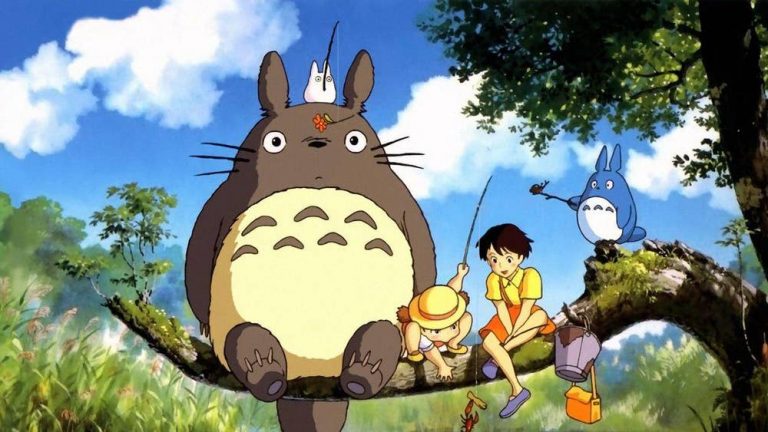On January 20th, 2020 Netflix made the announcement to the world that they had acquired exclusive worldwide streaming rights to the Studio Ghibli film library – unless you lived in Canada, Japan or the U.S. (where the upcoming HBO Max will host the catalogue).
Ghibli fans around the world celebrated the arrival of the beloved Japanese animation studios’ timeless collection of films that have enchanted audiences since the mid-1980s.
The works of the legendary Hayao Miyazaki, Isao Takahata, Yoshifumi Kondō, Hiroyuki Morita, Gorō Miyazaki and Hiromasa Yonebayashi were suddenly made instantly more accessible.
Previous attempts to collect these films in their purest and most honest state has been an endurance test to say the least.
Until now, the films have only been available through physical media which, due to different rights agreements, often meant that these films would ticket for a far higher price than your average DVD or Blu-ray.
Not to mention the infamous early years of Studio Ghibli’s presence in the West, through butchered releases of films such as Nausicaä of the Valley of the Wind (1984) and the treatment of Princess Mononoke (1997) under the hands of Harvey Weinstein at Miramax.
These films hold a special place for many worldwide viewers, through their timeless themes of adolescence, honour, nature, youth, atonement and of course the intent focus on crafting strong female characters.
While Studio Ghibli’s presence on Netflix is a huge win for fans seeking ease of access to these beloved films, the move to the world’s largest streamer opens to the floodgates to new viewers becoming acquainted with the imagination and pure masterful craftsmanship of Hayao Miyazaki.
Rather than releasing the entire library all at once, Netflix has opted for the wise decision to roll the films out on a monthly basis, to avoid any newcomers from becoming overwhelmed by the sheer variety of titles to choose from.
As of February 1st, 2020, the films available are Castle in the Sky (1986), My Neighbor Totoro (1988), Kiki’s Delivery Service (1989), Only Yesterday (1991), Porco Rosso (1992), Ocean Waves (1993) and Tales from Earthsea (2006).
Arriving on March 1st, 2020 are, Nausicaä of the Valley of the Wind (1984), Princess Mononoke (1997), My Neighbors the Yamadas (1999), Spirited Away (2001), The Cat Returns (2002), Arrietty (2010) and The Tale of the Princess Kaguya (2013).
Finally, April 1st, 2020 will see the release of Pom Poko (1994), Whisper of the Heart (1995), Howl’s Moving Castle (2004), Ponyo (2008), From Up on Poppy Hill (2011), The Wind Rises (2013) and When Marnie Was There (2014).
These films all offer unique and beautifully crafted messages that can be experienced by almost all ages, making the Studio Ghibli library an absolute god-send for families looking for endearing and thoughtful animated family experiences outside the typical Disney wheelhouse.
Films including My Neighbor Totoro (1988), Kiki’s Delivery Service (1989) and the Academy Award winning Spirited Away (2001) present the world at its most innocent, magical and honest, that are at times removed from the sappy melodrama often present in animated works from Hollywood. Better yet, these adventures are all experienced through the eyes of Miyazaki’s fully realized, young and inspirational heroines.
Some Studio Ghibli films like From Up on Poppy Hill (2011), offer slightly more mature experiences focusing on love and war, while the recent event of the Australian bushfires certainly makes the eco-friendly message of Princess Mononoke (1997) all the more prevalent and alarming.
As of writing, the only missing title is Isao Takahata’s anti-war film Grave of the Fireflies (1988) – arguably the heaviest film (thematically speaking) in Studio Ghibli’s library. While the film is currently entangled with different distribution rights, holding off on streaming the film may prove beneficial for Netflix attempting to introduce new audiences to Ghibli’s more uplifting works.
While the film is no doubt a powerful masterpiece in its own right, its intense use of grief and tragedy in wartime conditions, certainly makes it a harder experience to sell amongst the whimsy of Miyazaki’s imagination.
If you’re coming into these films fresh, I envy you, I truly do. Experiencing these films for the first time invites a truly genuine sense of wonder and joy that very few filmmakers get to achieve authentically.
The monthly rollout from Netflix invites a trial and error approach to see which stories work best for you and possibly your family. Perhaps a film might not click with you the way you’re initially expecting, but with a Studio Ghibli film, any viewing is rarely a wasted experience.
Better yet the films are all dubbed in English, or if you can overcome the 1-inch-tall barrier of subtitles, they can be experienced in their native Japanese.
Would owning all of these films on Blu-ray be the preferred way to access these films? Absolutely. But in an increasingly digital age, the Studio Ghibli library being available on Netflix is the best outcome one can hope for in making these films accessible.
Allow either of the seven films introduced each month, the opportunity to sell you their world and characters. If you do, you may just fall in love with an experience that you never knew existed.



